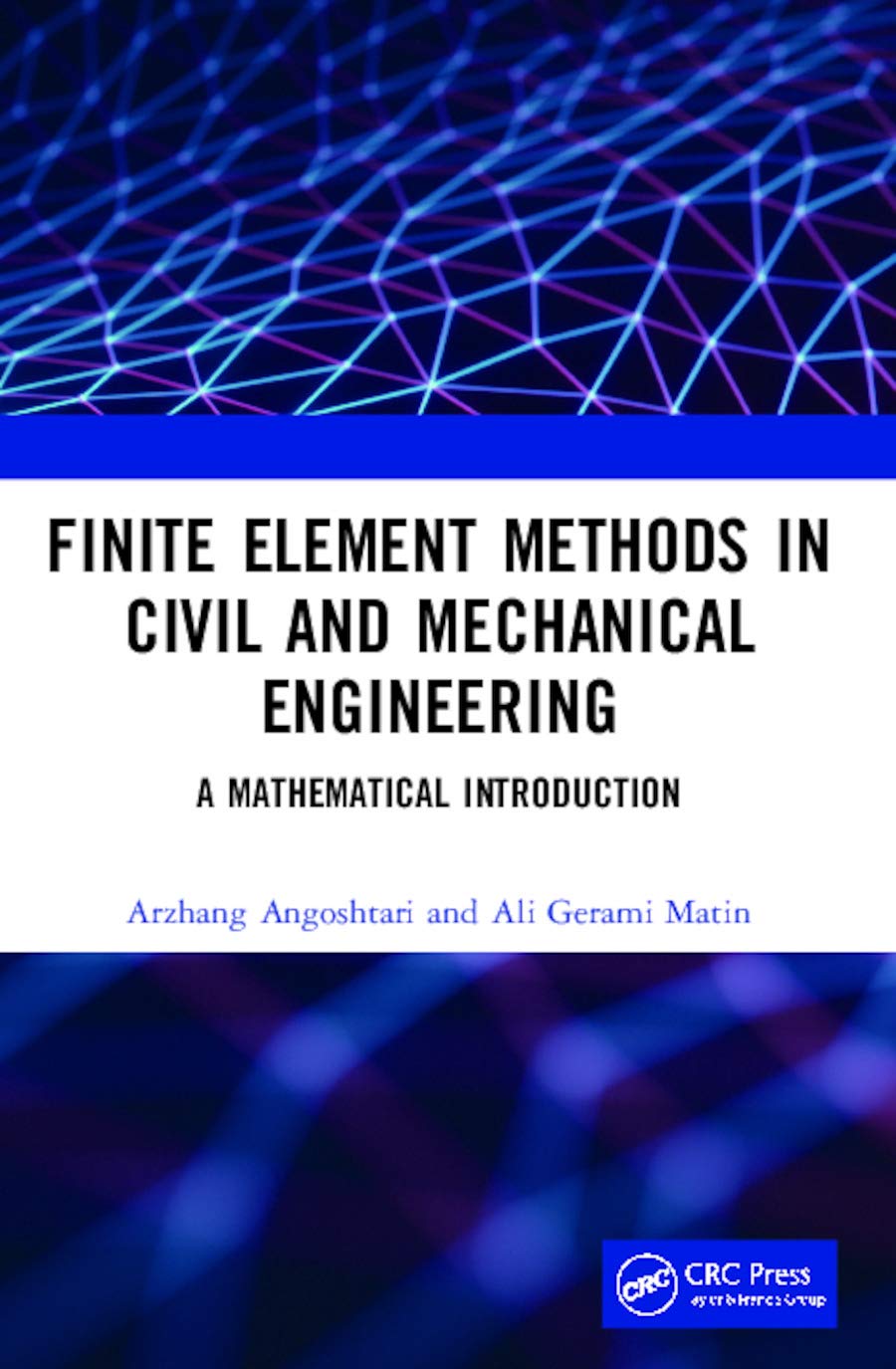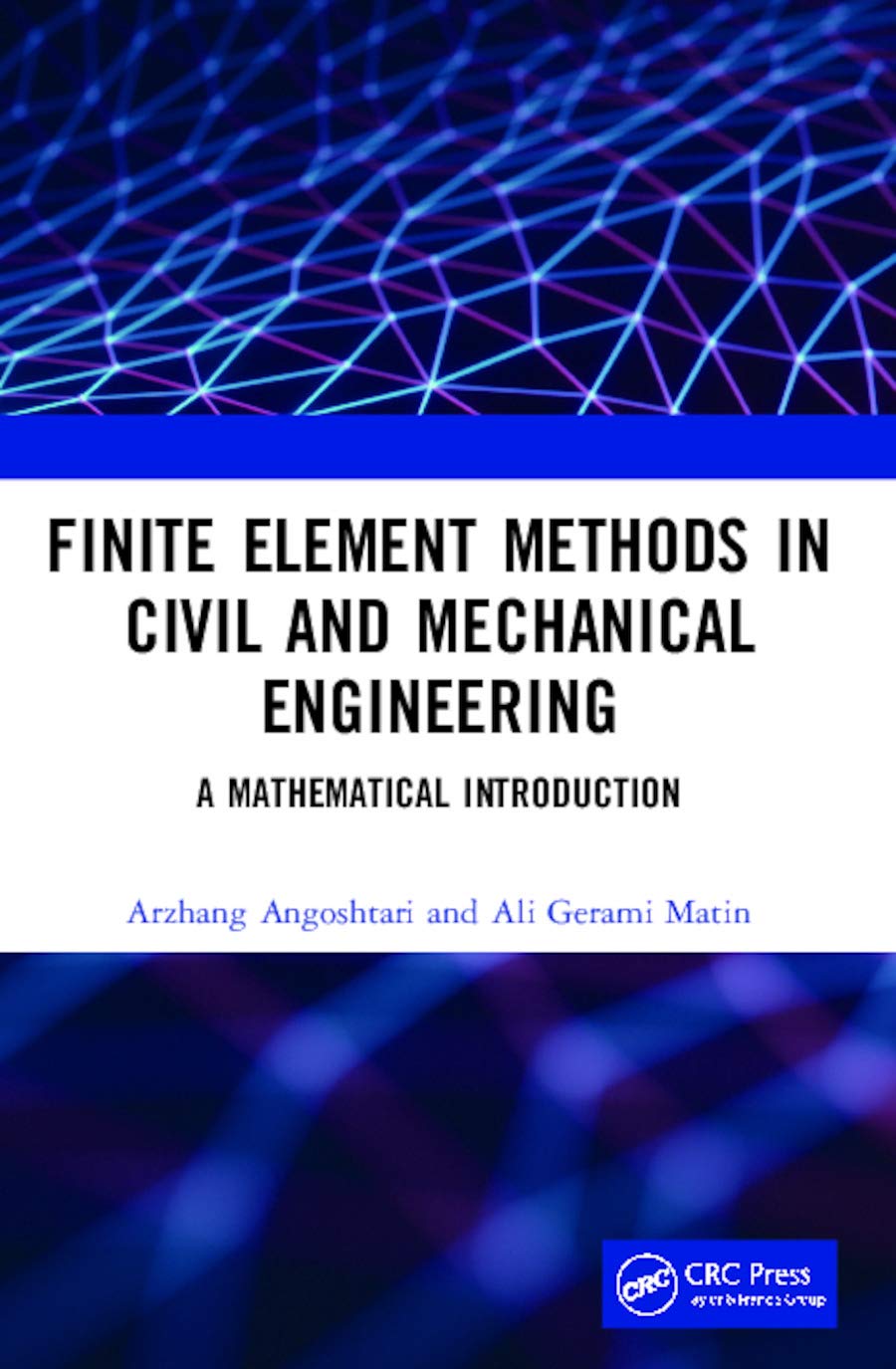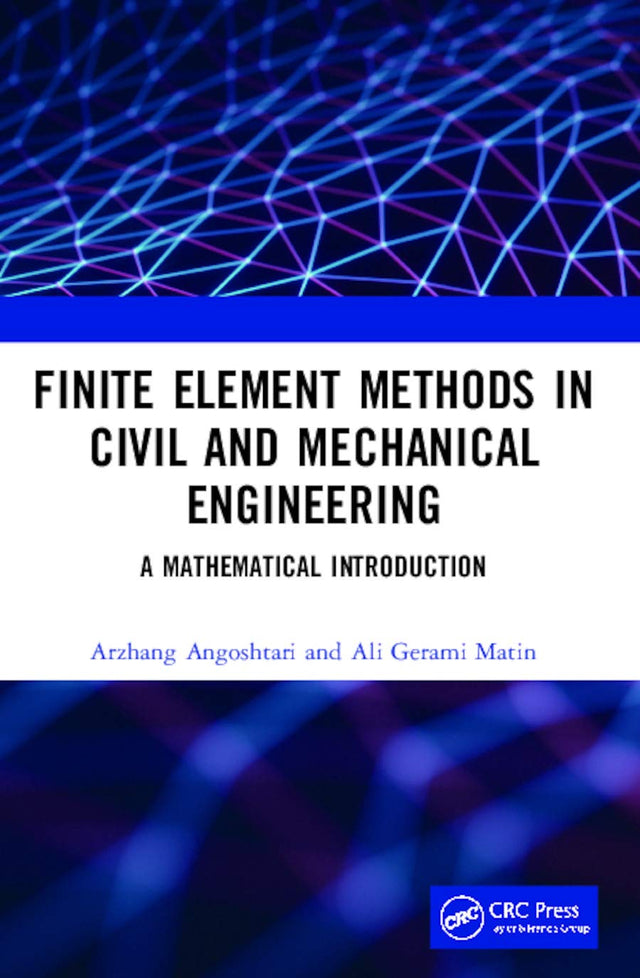Finite Element Methods In Civil And Mechanical Engineering A Mathematical Introduction (Pb 2021)
Finite Element Methods In Civil And Mechanical Engineering A Mathematical Introduction (Pb 2021) is backordered and will ship as soon as it is back in stock.
Couldn't load pickup availability
Genuine Products Guarantee
Genuine Products Guarantee
We guarantee 100% genuine products, and if proven otherwise, we will compensate you with 10 times the product's cost.
Delivery and Shipping
Delivery and Shipping
Products are generally ready for dispatch within 1 day and typically reach you in 3 to 5 days.
Book Details
-
Publisher: CRC Press
-
Author: Dr. Arzhang Angoshtari
-
Language: English
-
Edition: 1st
-
ISBN: 9781138335172
-
Pages: 167
-
Cover: Paperback
-
Dimensions: 9.2 x 6.1 x 0.4 inches
About The Book
Finite Element Methods in Civil and Mechanical Engineering: A Mathematical Introduction by Dr. Arzhang Angoshtari provides a mathematical foundation for understanding the finite element method (FEM) applied in civil and mechanical engineering. This book explores the core principles of FEM with a focus on its mathematical formulation, bridging the gap between theory and practice.
Designed for students, engineers, and practitioners, this book emphasizes the importance of mathematics in solving real-world engineering problems. It covers the basic principles, theoretical formulations, and practical implementation of finite element analysis (FEA), providing a robust introduction to solving engineering problems with FEM. With a focus on both civil and mechanical engineering, the book provides a versatile approach suitable for students from various engineering disciplines.
The text is written in a clear, concise manner, making it suitable for those with a foundational understanding of mathematics and engineering principles. It serves as a useful resource for those looking to understand the mathematical underpinnings of FEM before applying it to more complex, real-world scenarios. The book’s structured approach ensures that readers develop a solid understanding of FEM’s application in engineering contexts.





